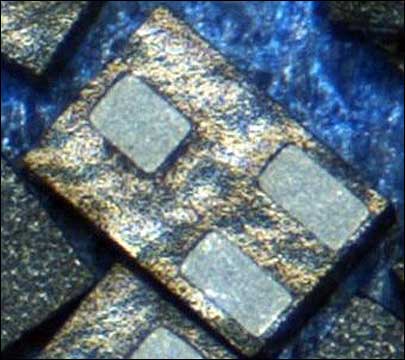Nov 20, 2008NXP Semiconductors has developed a new RFID chip for low-frequency (LF) passive RFID transponders compliant with the ISO 11784 and 11785 standards, and designed for animal tracking as well as for industrial logistics operations. According to the company, the new chip, known as the HITAG µ (pronounced "micro"), offers significant benefits: an anti-collision algorithm that can be used to read more than one tag in the same reader's field, and read-write speeds twice as fast as those supported by other LF chips currently on the market.
"This will bring low-frequency [tag] technology to the next level," says Bernd Tetyczka, NXP's HITAG product manager. The HITAG µ is the latest in NXP's family of HITAG chips. The HITAG S, the new chip's predecessor, also supported an anti-collision algorithm, but NXP officials say this function was "not targeted for the animal ID market and not used there."
Governments worldwide have passed a growing number of mandates and recommendations involving the use of RFID to track cattle, sheep, swine, poultry and other animals. Because an LF tag's read distance is short—a matter of centimeters—electronically capturing the ID encoded to a tag embedded in an animal generally requires the use of a handheld interrogator or a narrow gate reader through which only a single adult cow or other large animal passes at one time. Smaller animals could move through a narrow gate reader two at a time, but without an anti-collision algorithm, the interrogator is unable to capture both tag IDs reliably.
Tags manufactured with the HITAG µ chip could enable livestock producers to read multiple tags on smaller animals as they pass through gates, provided that the tags are close enough to the interrogator. Or, NXP reports, an adult cow would be able to pass through a gate reader along with a small calf.
Australia, for instance, represents a strong potential market for tags made with the HITAG µ, according to NXP. That nation's National Livestock Identification System (NLIS) has approved the use of radio frequency identification as part of its mandatory livestock-tracking program. Australia's large domestic animal market has more than 26 million cattle, but more than 120 million sheep (see Australian Sheep Farmers Explore RFID's Benefits).
Regulatory agencies, however, show no signs of moving away from the LF standard.
The U.S. Department of Agriculture's Animal and Plant Health Inspection Service (APHIS) manages the National Animal Identification System (NAIS), an information system used to help producers electronically track livestock animals in order to be able to identify disease. In an e-mailed message, Joelle Schelhaus, APHIS' public affairs specialist, told RFID Journal, "The USDA has adopted a technology-neutral position, but encourages advances in technology that will lead to increasingly efficient and accurate collection of animal identification information.... Anti-collision technology could help save time, increase data accuracy and, in turn, promote a higher level of traceability."
Dirk Morgenroth, NXP's director of marketing for RFID, points out that tags made with the HITAG µ could greatly improve efficiencies for industrial logistics applications, thanks to the anti-collision feature and faster read-write speed it supports, relative to earlier NXP chips. The new chip, Tetyczka says, supports encoding speeds of up to 60 transponders per second, which can reduce encoding time by 50 percent compared with older chips.
One potential application for tags made with the new chips, according to Tetyczka, involves tracking reusable gas cylinders in India (see Manufacturer to Track Half a Million Gas Cylinders). LF tags are well suited for tracking the cylinders because they can be read easily when mounted on metal, as opposed to tags that utilize higher frequencies. However, he notes, companies employing existing LF tags that do not support anti-collision must reduce the speed of the conveyor that brings the cylinders past a mounted reader, in order to avoid having more than one transponder in the read field simultaneously. The HITAG µ chip would allow such companies to increase the conveyor's speed.
NXP is currently sending sample quantities of the HITAG µ chip to tag makers, which will use them to build sample tags. NXP expects to produce the chips in high volumes by the end of March 2009, Tetyczka says. Tag manufacturers interested in selling livestock tags for use by U.S. livestock producers will first need to submit the tag to NAIS for approval.


